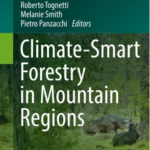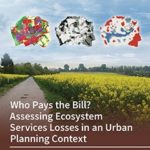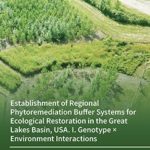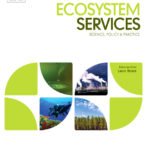
FOREST-AGRICULTURE-WATER NEXUS: Bilateral Workshops for Supporting Tools for Ecosystem Services Governance
Czech-Norwegian bilateral workshops on the use of floodplain forest buffer zones for improving water quality and reducing soil erosion.

Water quality is often influenced by agricultural production (soil run-off into watercourses, water pollution caused by fertiliser and other chemicals etc.). At the same time, current agricultural practices are contributing significantly to the erosion of valuable fertile soils. The costs of water treatment / purification within the water management infrastructure are increasing; the quality of soil and water, and the biodiversity are decreasing. Only little attention is paid to so called nature-based solutions (NBS), which could help meet these challenges and furthermore they bring also many other benefits to the society in form of various ecosystem services. One of these NBS is floodplain forest buffer zones between agricultural land and watercourses, but so far very little planting has taken place. The practical implementation of this measure faces a number of barriers.
The aim of the project is therefore to support the meetings of scientists and practitioners from the Czech Republic and Norway, enabling the exchange of experience and knowledge in this area, which should result in the submission of a joint bilateral or multilateral project aimed at identifying and evaluating the benefits of the riparian forest buffer zone and the subsequent proposal of support mechanisms for their practical implementation.
Funding Agency: State Environmental Fund of the Czech Republic, Norway Grants
Duration: 01/2019–08/2022
Contact Person: Jiří Louda, e-mail: louda@ieep.cz
In cooperation with: Norwegian University of Life Science, Global Change Research Institute, Czech Academy of Sciences
Review of Policy Instruments for Climate-Smart Mountain Forestry
What instruments can be used to implement climate-smart forestry in mountain areas of Europe?
Abstrakt: Implementing the Climate-Smart Forestry (CSF) concept into practice requires interaction among key stakeholders, especially forest owners and managers, policymakers (or regulators in general), forest consultants, and forest users. But what could be the most effective policy instruments to achieve climate smartness in mountain forests? Which ones would be the most acceptable for forest owners? And for the local forest communities? Should they be designed and implemented with the use of participatory approaches or rather on a top-down basis? This chapter summarizes key policy instruments structured in three subsequent categories: command-and-control, voluntary market-based instruments, and community cooperation. It provides examples of their functioning in the forestry sector and discusses their suitability for the implementation of climate smart forestry. It appears that there are many policy instruments used with varying degrees of success such as forest concessions or voluntary certification schemes. A wide range of instruments are responding to direct regulation; this has been seen as insufficient to deal with natural hazards and calamities.
Citation: Dubova L. et al. (2022) Review of Policy Instruments for Climate-Smart Mountain Forestry. In: Tognetti R., Smith M., Panzacchi P. (eds) Climate-Smart Forestry in Mountain Regions. Managing Forest Ecosystems, vol 40. Springer, Cham. https://doi.org/10.1007/978-3-030-80767-2_14
Download: ↓ Review of Policy Instruments for Climate-Smart Mountain Forestry
The Value of Urban Nature in Terms of Providing Ecosystem Services Related to Health and Well-Being: An Empirical Comparative Pilot Study of Cities in Germany and the Czech Republic.
How do city dwellers feel in urban greenery? How does this greenery affect their health and well-being? And what types of urban greenery do residents prefer the most?
Abstract: The quality of life in our cities critically depends on the intelligent planning and shaping of urban living space, in particular urban nature. By providing a wide range of ecosystem services (ES), urban nature essentially contributes to the well-being of city dwellers and plays a major role in avoiding common diseases through its positive impact on physical and mental health. Health is one of the most important factors underlying human welfare and is, thus, vital to sustainable development. The ES of urban green space provide other social-cultural functions alongside public health, for example by fostering environmental justice and citizenship participation. Thus, they should always be considered when searching for solutions to urban problems. The aim of this research was to determine the impact of green areas in three selected cities on the health and well-being of people by self-reporting of green areas’ visitors. To this end, we posed the research question: which types and characteristics of urban green space are most appreciated by city dwellers? Based on our findings, we have drawn up recommendations for practices to promote better living conditions. We have also pinpointed obstacles to and opportunities for leisure time activities as well as ways of supporting the public health of citizens.
Syrbe, R., Neumann, I., Grunewald, K., Brzoska, P., Louda, J., Kochan, B., Macháč, J., Dubová, L., Meyer, P., Brabec, J., Bastian, O. (2021). The Value of Urban Nature in Terms of Providing Ecosystem Services Related to Health and Well-Being: An Empirical Comparative Pilot Study of Cities in Germany and the Czech Republic. Land, 10 (4): 341. https://www.mdpi.com/2073-445X/10/4/341
Achieving Robust and Socially Acceptable Environmental Policy Recommendations: Lessons from Combining the Choice Experiment Method and Institutional Analysis Focused on Cultural Ecosystem Services
The article describes how the use of a combination of quantitative and qualitative scientific methods could contribute to the design of socially acceptable environmental policy recommendations.
Abstract: The reflection of ecosystem services in environmental policy has recently become a key aspect in solving environmental problems occurring as a consequence of their overburdening. However, decision makers often pay attention predominantly to results of quantitative (monetary valuation) methods. This article explores a new way of combining quantitative and qualitative methods that has proven to be a useful practice for achieving better environmental governance. We combine the (quantitative) choice experiment method and (qualitative) institutional analysis as full and equal complements. In our approach, the goal of qualitative institutional analysis is not to verify the adequacy of willingness-to-pay results but rather to better address cultural and social perspectives of society representatives. Such an approach increases the robustness of policy recommendations and their acceptance in comparison with isolated applications of both methods. To verify this general premise, both methods were applied in the territory of the Eastern Ore Mountains in the Czech Republic to capture preferences and attitudes of local stakeholders as well as tourists towards small-scale ecosystems. The results confirm that preference calculations regarding aesthetic values of ecosystems need to be complemented with facts about institutional settings and barriers in order to better address locally relevant recommendations for decision makers, such as the introduction of new economic instruments (e.g., local taxes or entrance fees). The findings of this study can also be considered for governance of larger local, common-pool resources such as (public) forests or protected areas.
Louda, J., Vojáček, O., Slavíková, L. (2021). Achieving Robust and Socially Acceptable Environmental Policy Recommendations: Lessons from Combining the Choice Experiment Method and Institutional Analysis Focused on Cultural Ecosystem Services. Forests, 12 (4): 484. https://www.mdpi.com/1999-4907/12/4/484
Lessons learned from implementing the ecosystem services concept in urban planning
What is the experience with implementing the concept of ecosystem services in the practice of urban planning in 10 European cities?
Abstract: This paper presents a summary of lessons learned from implementing the ecosystem services (ES) approach into urban planning practice in different European urban settings. We summarise a survey co-created with, and presented to, researchers and end-users in city administrations from ten European case study cities. To complement the expert analysis, 14 semi-structured interviews were conducted among stakeholders to assess the use of ES in practice in urban settings. There was strong agreement between scientists and practitioners on both the opportunities and the barriers to uptake the ES concept in urban planning practice. Key agreements were that the ES concept supports decision-making as well as spatial planning, it is most useful as a communication tool, and monetarisation and public pressure can be considered as promoting factors. Barriers are lack of evidence including case studies, standardised methods and criteria to evaluate nature and its benefits, lack of legislations/reform, limited capacity and reluctance to apply ES in planning practice, and limited public involvement. On individual aspects, such as the monetarisation of ES, views differed both among the scientists and the practitioners. Derived from our investigations we summarize in which circumstances the ES concept is most relevant and useful for urban planners and decision-makers.
Grunewald, K., Bastian, O., Louda, J., Arcidacono, A., Brzoska, P., Bue, M., Cetin, N., Dworczyk, C., Dubová, L., Fitch, A., Jones, L., La Rosa, D., Mascarenhas, A., Ronchi, S., Schlaepfer, M., Sikorska, D., Tezer, A. (2021). Lessons learned from implementing the ecosystem services concept in urban planning. Ecosystem Services, 49, 101273; https://www.sciencedirect.com/science/article/abs/pii/S2212041621000310?via%3Dihub
Municipalities talk about water: Communication of the implementation of rainwater management measures in cities
Effective communication between municipalities and public on implementing measures for better rainwater management.
The project focuses on self-government needs in relation to communicating measures related to rainwater management (RWM), such as greenery planting, permeable surfaces, eco-friendly greenery maintenance, green roofs and walls, etc.
Good communication between the municipality and the public is a basic prerequisite for effective planning, easier implementability and better understanding of the purpose of specific measures. However, there are still numerous barriers to public involvement in planning and execution of RWM measures in practice. The effects include the fact that the public is not sufficiently informed about and identified with the purpose of specific measures. At the same time, some cities lack sufficient capacities for creating intelligible content that would be interesting and instructive for the public. A frequent consequence is conservation of existing unsatisfactory ways of both communication and rainwater management itself.
Therefore, the project “Municipalities talk about water” will primarily identify needs of municipalities for better communication of RWM measures and test effectiveness of communication capacities in relation to specific measures and public target groups.
The project is based on linking researchers in various disciplines (sociology, economics, marketing, public administration, urbanism). In this project, the IEEP research team follows up on its previous research dealing with green and blue infrastructure (see Methodology for Economic Assessment of Green and Blue Infrastructure) and rainwater management (see WATER IN CITIES methodology).
.
| Funding agency: | Technology Agency of the Czech Republic (TL05000674) |
| Duration: | 05/2021 – 12/2023 |
| Contact person: | Jan Macháč, e-mail: machac@ieep.cz |
| Researchers: | Lucie Povolná, Jan Macháč, Marek Hekrle |
| In cooperation with: | UJEP FSE (lead partner) and ČVUT UCEEP (project partner) |
| Project outcomes: | The main project outcome will be rules and procedures for communication of selected RWM measures between local self-governments and the public. |
Improving society’s resilience to effects of crisis by increasing food self-sufficiency
Promotion of establishment of urban community gardens (CG) to mitigate economic and social impacts of crises.
Community gardens brings numerous benefits for their members not only in the form of crop production or promotion of social relations, as well as other city inhabitants. As a green element in the urban environment, they contribute to improving quality of life by providing ecosystem services, including rainwater runoff regulation, air quality regulation and microclimate cooling. In a broader context, they additionally perform educational, recreational and cultural functions, and are a place for safe meetings in the public space, a venue for cultural events, education for children, etc. From elected municipal representatives’ point of view, they meet goals of climate change adaptation strategies and may contribute to development of neglected or otherwise unused urban land. Promotion of urban CG is thus also beneficial for inhabitants not directly affected by impacts of crises.
The objective of this interdisciplinary project is to identify the potential for reducing negative impacts of crises by establishment of community gardens on municipal land leading to increasing food self-sufficiency of city inhabitants. A survey among community garden members, coordinators as well as city inhabitants and elected municipal representatives will identify benefits of community gardens during the COVID-19 crisis, barriers to establishment of urban CG and most appropriate plots of land, along with checking the demand among inhabitants for involvement in urban agriculture in community gardens. Eventually, we will identify the overall potential for CG establishment by municipalities in order to mitigate negative impacts of economic and social crises on inhabitants.
In this project, the IEEP research team follows up on its previous research dealing with benefits of community gardens and motivations of their members. The findings will be dissemination in collaboration with KOKOZA, o.p.s., and will be used to support establishment of specific urban community gardens in selected cities.
| Funding agency: | Technology Agency of the Czech Republic (TL05000718) |
| Duration: | 05/2021 – 12/2023 |
| Contact person: | Jan Macháč, e-mail: machac@ieep.cz |
| Researchers: | Jan Macháč, Lenka Dubová, Marek Hekrle, Jan Vávra |
| In cooperation with: | KOKOZA, o.p.s. (project partner) |
| Project outcomes: | The main project outcome will be a Summary Research Report, presenting benefits of CG during crises, demand for urban CG among inhabitants, supply by municipalities and factors of CG sustainability, providing recommendations for elimination barriers to CG establishment, and presenting a procedure for identifying suitable sites for CG establishment in Czech cities. |
Rainwater management in households: economic incentives, barriers and motivations
Why Czech households do (not) use rainwater? What are the effective positive and negative incentives for more intensive rainwater management?
Changes in hydrological regime and their impacts, such as droughts and flashfloods, require changes in rainwater management. Households are important parts of the story. Retained rainwater can be replace part of the drinking water uses, such as garden irrigation, flushing toilets, etc. The project aims at capturing household preferences towards rainwater management – this is done through repeated representative surveys, so we can compare differences in preferences in time. Also, impacts of economic instruments of the public policy are evaluated in this area.
We cooperate with STEM and Faculty of Civil Engineering of the Czech Technical University Prague.
| Funding Agency: | TAČR, SMART-ITI |
| Duration: | 2017 – 2023 |
| Contact Person: | Lenka Slavíková, e-mail: slavikova@ieep.cz, lenka.slavikova@ujep.cz |
| Researchers: | Lenka Slavíková, Jan Macháč |
STRIMAII: Saxon-Czech Flood Risk Management II
Vulnerability to floods, nature-based measures and importance of small water bodies
A series of three studies and leaflets dedicated to different aspects of floods, solved by the project Saxon-Czech Flood Risk Management II, funded by the European Union via the European Regional Development Fund. For more information about STRIMA II, click zde.
Vulnerability
Globally, floods are among the most serious natural dangers, which is why we need to focus on reducing their impacts. However, that requires both detailed understanding of their different aspects and grasping their complex nature. Vulnerability belongs among the key terms in flood risk management. The degree of vulnerability is determined separately for the population and for different types of structures or activities, for example. Vulnerability is described in detail in the leaflet and the study.
Bibliographic reference: Raška, P. et al. (2018). Vulnerability to floods: Information material on flood vulnerability assessment for public administration and private entities (Zranitelnost povodněmi: Informační materiál k hodnocení zranitelnosti povodněmi pro veřejnou správu a soukromé subjekty). J. E. Purkyně University in Usti nad Labem
For download:
Information leaflet: What is flood vulnerability? Summary for public administratrion and private entities (English version)
Information leaflet: Wie ist Verletzbarkeit durch Hochwasser zu verstehen? (German version)
Nature-based flood protection measures
Nature-based flood protection measures are implemented in landscape, on watercourses or in human settlements and make use of green and blue infrastructure. In addition to these functions, they often provide many more benefits for ecosystems (such as soil protection from erosion). Measures implemented to protect from floods include polders, pools and baulks. Their function with regard to floods consists in capturing water in landscape, slowing down its progress and capturing torrential rains and resulting flood waves. The outcomes focus primarily on economic aspects (costs and benefits) and on ecosystem services provided.
Bibliographic reference: Macháč, J. et al. (2018). Classification and evaluation of nature-based flood protection measures in selected environmental public goods (Klasifikace a hodnocení přírodě blízkých protipovodňových opatření na vybraných veřejných statcích životního prostředí). J. E. Purkyně University in Usti nad Labem
For download:
Information leaflet: Nature-based flood protection solutions and their benefits (English version)
Information leaflet: Was versteht man unter naturnahen Hochwasserschutzmaßnahmen? (German version)
Small water bodies in landscape: their functions and barriers to their construction
Drought periods as well as torrential rains require a change in water source management. One possible strategy is to improve the ability to retain precipitation as close as possible to its place of impact, thus slowing water runoff from the catchment area. Solutions include establishment of small water bodies in landscape, specifically various types of pools, systems of pools and wetland ecosystems. The advantage is that some of them do not need to be permanently filled with water and they have no technical outflow controls, and they simultaneously perform a number of interconnected functions in the landscape. However, their implementation is associated with possible barriers, such as ownership relations in the area and insufficient funding sources. See the study and the leaflet for more information.
Bibliographic reference: Slavíková, L. et al. (2019). Small water bodies in landscape as a comprehensive tool for water retention in catchment areas: Institutional analysis results (Drobné vodní plochy v krajině jako komplexní nástroj k retenci vody v ploše povodí. Výsledky institucionální analýzy). J. E. Purkyně University in Usti nad Labem
For download:
Information leaflet: Small water bodies in landscape: their functions and barriers to their construction (English version)
Information leaflet: Kleinwasserflächen in der Landschaft: ihre Funktion und Hindernisse bei der Errichtung (German version)






